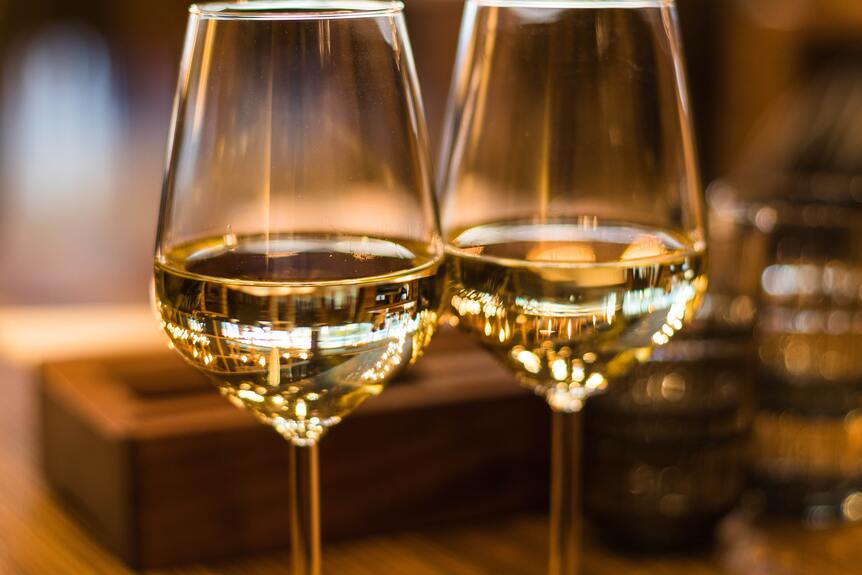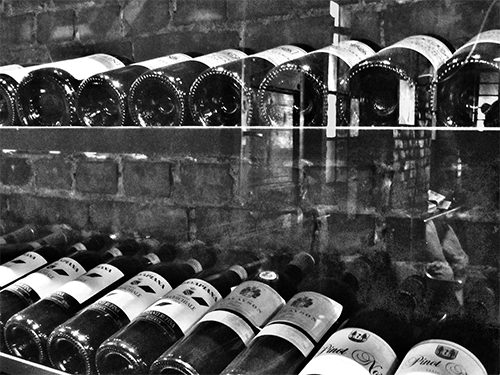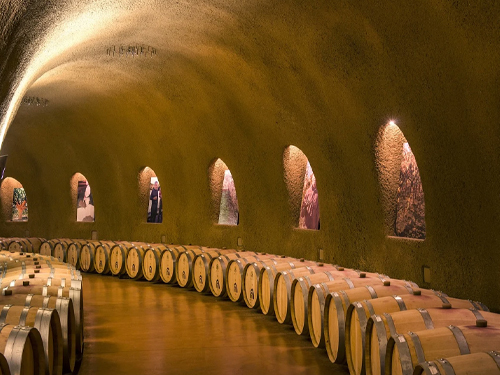Rédigé le 09/03/2022
Tout comprendre sur la robe d'un vin.

Cela fait partie intégrante de la dégustation. Lorsque l'on vous verse du vin dans votre verre, avant même de le porter à votre nez ou à votre bouche, c'est l'oeil qui fait la première analyse. Et pour cause, l'intensité de la robe d'un vin peut en dire énormément sur ses différentes caractéristiques.
Pour ce faire, il faudra pencher légèrement le verre de vin. Cela vous permettra de voir l'intensité de la robe. Une intensité qui varie selon quatre facteurs :
La couleur du vin provient à la base de la macération de la peau du raisin et du jus. S'il y a beaucoup de peau et peu de jus, le vin sera foncé. A contrario, s'il y a peu de peau et beaucoup de jus, le vin sera plus pâle. À savoir que selon les cépages, le rapport jus/peau est différent.
Un vin plus vieux aura tendance à être plus pâle. Au fil du temps, il va perdre ses pigments colorants. Un phénomène inverse pour le vin blanc qui aura tendance à devenir plus foncé en vieillissant.
Pour les vins "jeunes", les couleurs de références seront les suivantes :
- Vin blanc : argenté ou jaune vert
- Vin rouge : violacé ou rubis
Pour les vins "épanouis" :
- Vin blanc : jaune paille ou or jaune
- Vin rouge : franc ou grenat
Pour les vins "évolués"
- Vin blanc : doré ou ambré
- Vin rouge : tuilé ou rouge brun.
Cela aura également une incidence sur l'intensité du vin. Grâce au soleil, le raisin mûrit d'avantage et permettra aux grains de se concentrer en sucre et en couleur. Plus le vin est sucré, plus la couleur sera foncée.
C'est la raison pour laquelle un climat ensoleillé aura tendance à donner des vins avec une couleur foncée. À savoir qu'un vin moelleux, sera lui encore plus foncé car il produit avec des vins en surmaturité, donc très sucré.
La vinification permettra également de gérer l'intensité du vin. Une longue macération entre la peau et le jus permettra d'extraire davantage de pigments colorants et donc, d'avoir des vins plus foncés.
Il est également important de comprendre que malgré un cépage identique, l'intensité du vin peut varier en fonction de la macération, la durée de celle-ci mais aussi la température.
Grâce à ces éléments, vous allez pouvoir commencer à établir la carte d'identité du vin avant la suite de la dégustation,
qui se fera au nez !














